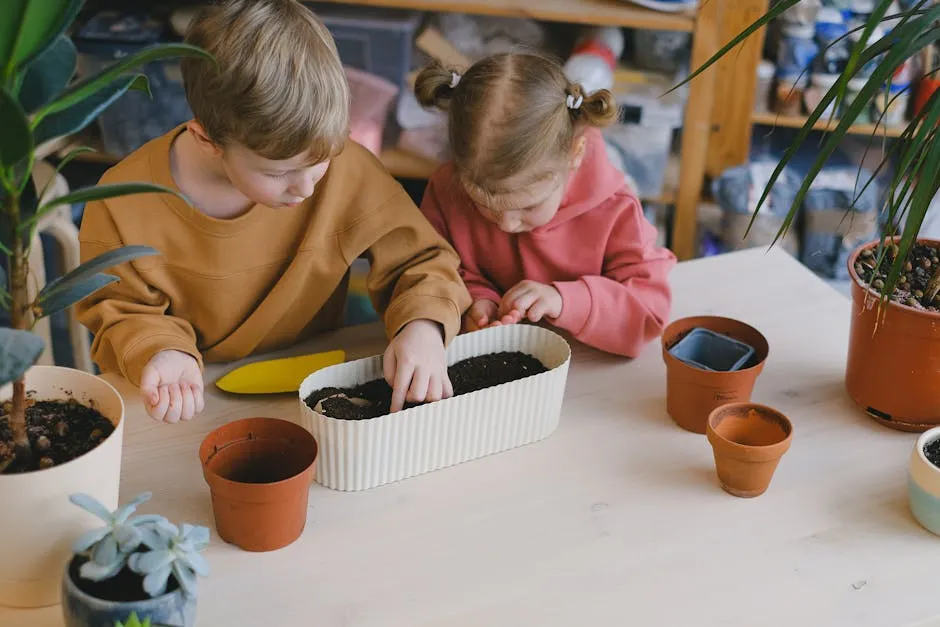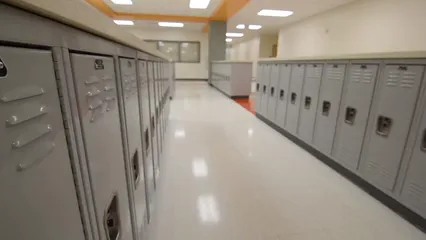Introduction
The education debate rages on! Public schooling versus homeschooling — which one reigns supreme? Parents often find themselves caught in this whirlwind, weighing options for their little scholars. Public schools boast a structured environment and diverse social interactions. Meanwhile, homeschooling promises personalized curriculums and family bonding.
However, statistics provide clarity amid this chaotic choice. Data doesn’t lie, right? It reveals trends and highlights significant differences between these two educational paths. Understanding these numbers is crucial for families navigating their children’s education.
This article aims to explore why public schooling may be a better choice based on various statistics. Let’s dive into the numbers and see who comes out on top in this educational showdown!
The Landscape of Education
Overview of Public Schooling
Public schooling refers to education provided by government-funded institutions. These schools serve a vast array of students and play a vital role in the educational system. The objective? To provide accessible education for all children, regardless of socio-economic background.
Public schools enroll around 49.5 million students across the United States. They receive funding primarily from federal, state, and local taxes. Schools must adhere to regulations and curriculum standards set by the government. This structure ensures accountability and a consistent educational experience.
With a diverse demographic, public schools reflect the nation’s rich tapestry. Approximately 66.6% of public school students come from minority backgrounds. This diversity fosters an environment where students can learn from one another, promoting tolerance and acceptance.

Overview of Homeschooling
In recent years, homeschooling has surged in popularity, especially post-COVID-19. Parents have embraced the idea of educating their children at home. As of the 2021-2022 school year, about 3.1 million students were homeschooled, making up roughly 6% of school-age children.
Why are families choosing this path? Many cite reasons like dissatisfaction with traditional schooling, the desire for personalized education, and concerns about safety or academic quality. The flexibility homeschooling offers can be irresistible for some families.
However, it’s essential to note that homeschooling can vary significantly in quality. Some parents excel at creating engaging curriculums, while others may struggle. This inconsistency raises questions about the overall effectiveness of homeschooling as an alternative.
To help with the homeschooling journey, a The Ultimate Guide to Homeschooling can provide valuable insights and tips for parents embarking on this educational adventure.
As we unpack these educational landscapes, it’s clear that statistics play a crucial role. They help families make informed decisions about their children’s future. Understanding the significance of statistical learning can greatly aid in this decision-making process.

Understanding the significance of statistical learning can greatly aid in this decision-making process. an introduction to statistical learning with python book length
Academic Performance
Standardized Test Scores
In the realm of academic performance, standardized test scores are often the first battleground. Let’s look at the numbers! Homeschooled students consistently outperform their public school counterparts by a notable margin. According to the National Home Education Research Institute, homeschooled students score approximately 15 to 25 percentile points higher on standardized tests like the SAT and ACT. For instance, the average SAT score for homeschooled students hovers around 1,093, while public school students average about 1,012. This gives homeschooled students an 80.5 point advantage!
However, it’s important to note that the landscape isn’t entirely one-sided. Public school students have been shown to perform better in subjects like mathematics. The Coalition for Responsible Home Education found a specific “math gap,” indicating that public school students often excel in math compared to their homeschooled peers. This gap may stem from the challenges parents face when teaching complex math topics, which often require specialized knowledge and resources.
The complexity of comparing standardized test scores lies in the fact that many homeschooled students do not take these tests at all. Therefore, while those who do typically excel, it doesn’t provide a complete picture. So, while homeschooled students may have an edge in overall scores, their counterparts in public schools still hold strong in certain subjects.

To bridge that math gap, consider using Math Manipulatives for Homeschooling. These tools can make complex concepts easier to grasp and bring a hands-on approach to learning!
Graduation Rates
When it comes to graduation rates, public schools take the lead. Approximately 91% of public school students graduate high school within four years. In contrast, only about 66.7% of homeschooled students achieve the same milestone. This disparity raises important questions about the long-term educational outcomes for these students.
Graduation rates often serve as a critical indicator of future success. A diploma opens doors, allowing students to pursue higher education or enter the workforce. The implications of these statistics are significant. Public school students benefit from structured environments and diverse resources that can support their academic journeys, ultimately leading to higher graduation rates.
On the flip side, homeschooled students often face unique challenges. The lack of oversight and varied educational quality can hinder their educational experiences. While some excel and graduate with flying colors, others may struggle without the necessary guidance and support systems found in public schools. This difference in graduation rates underscores the importance of a structured educational environment for achieving academic goals.

If you’re looking for a comprehensive resource to help guide your homeschooling journey, check out The Everything Homeschooling Book. It’s a complete guide to teaching your children at home!
Subject Proficiency
Now, let’s turn our attention to subject proficiency. Research indicates notable performance disparities between public school and homeschooled students across various subjects. While homeschooled students often excel in reading and writing, studies indicate that public school students tend to perform better in subjects like mathematics and science.
A comprehensive analysis by NHERI shows that homeschooled students score higher in reading and language arts, often due to the personalized nature of their education. Parents can tailor the curriculum to their children’s interests and strengths, fostering a love for learning. However, this adaptability may come at a cost.
In mathematics, the Coalition for Responsible Home Education highlights a distinct weakness among homeschooled students. The complexity of math concepts can be challenging for parents who may not have a strong background in the subject. Consequently, this gap can affect students when they transition to higher-level math courses, where foundational knowledge is crucial.

In science, the results are mixed. Public school students benefit from laboratories, specialized teachers, and hands-on experiments, while homeschooled students may have fewer resources. However, homeschooled children often engage in real-world learning experiences, such as field trips to science museums or nature hikes, which can enrich their understanding of scientific concepts. For those keen to explore science at home, consider Science Experiment Kits for Kids to make learning fun!
In conclusion, while homeschooled students may shine in certain subjects, public school students demonstrate strengths in others. The differences in academic performance highlight the importance of considering the educational environment and the resources available to students. As families weigh their options, understanding these statistics can provide valuable insights into the effectiveness of each educational approach. Ultimately, the right choice hinges on individual circumstances, learning styles, and the available support systems.
Socialization and Emotional Development
Opportunities for Social Interaction
Public school students have a plethora of social opportunities. From lunchroom banter to team sports, the interactions are endless. A study by the National Home Education Research Institute (NHERI) reveals that public school students engage in diverse social settings, allowing them to form friendships across various backgrounds. About 80% of public school students participate in extracurricular activities, which is a goldmine for social skills.
In contrast, homeschooled children often interact in smaller circles. While they might attend community events or join homeschool co-ops, statistics show these interactions can fall short. According to a 2021 EdChoice survey, 44% of parents felt their homeschooled children lacked enough socialization. Though homeschooling fosters deep family connections, it may not provide the same breadth of social experiences as public schooling.

Emotional and Psychological Well-being
Research indicates that emotional development is crucial for children. A comprehensive study highlights that public school students tend to experience higher levels of emotional resilience. They learn to navigate friendships, conflicts, and peer pressure, contributing to overall psychological well-being. In fact, NHERI found that about 87% of peer-reviewed studies indicated that homeschooled students generally perform well emotionally. However, public school environments can enhance adaptability and coping strategies, preparing students for life’s ups and downs.
On the flip side, homeschooling can lead to unique emotional challenges. Some homeschooled kids struggle with feelings of isolation. For instance, a 2014 study showed that 25% of homeschooled respondents reported feeling poorly socialized. While homeschooled students often excel in self-esteem and self-discipline, they might miss out on the diverse emotional learning experiences public schools provide.

Addressing Socialization Concerns
Critics of homeschooling often point to socialization concerns. They argue that homeschooled children may lack the necessary skills to interact effectively with peers. However, many studies refute this claim. For instance, a 2003 study by the Home School Legal Defense Association (HSLDA) suggested that homeschooled children tend to develop social skills comparable to their public school peers. Many homeschooled children actively engage in community service and group activities, which enhance their social competence.
Nonetheless, the debate continues. Critics argue that the research supporting homeschool socialization is flawed. A 2021 survey revealed that 44% of parents worried about their children’s social interactions. This raises an important question: are homeschooled children missing out on essential social learning experiences?

In summary, while homeschooled children can develop strong emotional and social skills, public school environments offer unique opportunities for broader social interaction and emotional learning. The diversity of experiences available in public schools plays a pivotal role in shaping well-rounded individuals. Families must weigh these factors when considering educational options, keeping in mind the diverse needs of their children.
To keep the family engaged and connected, consider investing in some Educational Board Games for Family Game Night. They provide a fun way to learn while spending quality time together!
College and Career Readiness
College Acceptance Rates
Let’s kick things off with a little college talk! The numbers show that public school students often have an edge when it comes to getting accepted into colleges. According to recent statistics, about 74% of homeschooled students pursue higher education. However, public school students are also in the mix, with approximately 44% seeking college admission.
But here’s the kicker: college acceptance rates can vary wildly. A 2016 report indicated that homeschooled students applying to traditional colleges are increasingly successful. These students bring unique portfolios showcasing their diverse learning experiences, which impress admission officers. However, the trend seems to favor public school students, who typically have a more straightforward path through the admissions process.

In fact, the National Home Education Research Institute (NHERI) cites that public school students often benefit from structured college preparatory programs, making them more appealing to admissions committees. Traditional schooling exposes students to a wider range of extracurricular activities and advanced placement courses, which bolster their college applications. So, while homeschooling has its merits, public school students might hold the upper hand here.
If your student is preparing for standardized tests, consider picking up The SAT Prep Black Book. It’s packed with effective strategies to tackle the exam!
Career Readiness and Job Performance
Now, let’s flip the script and explore career readiness. Public schools have a knack for preparing students to enter the workforce. They provide structured learning environments, access to guidance counselors, and career services which can make a world of difference.
Research indicates that public school graduates tend to perform better in job placements. According to a study by the Coalition for Responsible Home Education, the overall job performance of public school graduates is generally higher than their homeschooled counterparts. This might be due to the social interactions and teamwork skills students develop in public schools.

Moreover, public school students often engage in internships and job shadowing opportunities, providing them with practical experience before they even graduate. These experiences can lead to smoother transitions into the workforce. On the other hand, while homeschooled students often excel academically, they may lack exposure to real-world scenarios that public school students encounter regularly.
In the grand scheme of things, public schooling equips students not just with knowledge but also with crucial life skills that are highly valued in today’s job market. For those looking to enhance their learning experience, don’t forget to check out ACT Prep Book 2023, which offers practice test questions to sharpen those skills!
Cost Analysis
Financial Implications of Public Schooling
Let’s talk dollars and cents! Public schooling comes with a price tag, but it’s one that many families find manageable. The average cost per pupil in public schools is around $16,446 annually, according to the National Education Association. This figure includes not just teacher salaries but also textbooks, transportation, and extracurricular activities.
One of the significant advantages here is that public funding supports various educational resources. These resources include libraries, laboratories, and access to specialized programs that can enrich a student’s learning experience. It’s like having a buffet of educational opportunities available at no extra cost to parents!

In contrast, homeschooling can be a different financial ballgame. While it may seem like a cost-effective choice—averaging only about $600 per student annually—it’s essential to consider the hidden costs. Parents often incur expenses for educational materials, extracurricular activities, and sometimes even lost income if one parent stays home to teach.
So, while public schooling may appear pricier upfront, the value of resources, social interactions, and structured learning environments can make it a worthwhile investment for many families. In the end, the financial implications of both options depend on family circumstances, but the scales seem to tip in favor of public education when considering available resources.
Financial Considerations of Homeschooling
Homeschooling may seem like a budget-friendly option, but the financial realities tell a different story. Parents often face significant costs when choosing to educate their children at home. On average, homeschool families spend around $600 per student annually on educational materials, but this figure can soar to over $1,800 depending on curriculum choices and extracurriculars.
Let’s not forget the hidden costs. Many families experience lost income if one parent opts to stay home and teach. This sacrifice can lead to financial strain, especially in today’s economy where every penny counts. Public school, on the other hand, benefits from taxpayer funding which supports various educational resources and extracurricular activities, making it a more cost-effective solution for many families.

In public schools, the average expenditure per pupil is around $16,446 annually. This figure includes teacher salaries, textbooks, transportation, and facilities. With public schooling, families gain access to a wealth of resources without the need to fork out significant sums every year.
When comparing the two systems, the overall financial implications favor public schooling. While homeschooling offers flexibility and personalized curricula, it may also lead to unforeseen expenses and lost income, making it a more burdensome financial commitment for families. If you want to save some money while cooking at home, don’t forget to check out Family Cookbooks: Fun Recipes for Kids to make family meals enjoyable!
FAQs
What are the main benefits of public schooling?
Public schooling offers numerous advantages. One key benefit is the socialization opportunities that arise from daily interactions with diverse peers. This exposure helps students develop essential communication and teamwork skills that are vital in adulthood. Additionally, public schools provide access to various resources, such as libraries, sports teams, and specialized programs that enhance the learning experience. The structured environment fosters routine, which many children thrive on, allowing them to learn effectively.
Are homeschoolers at a disadvantage when applying to colleges?
While homeschooled students have gained acceptance to many prestigious colleges, they sometimes face challenges in the admissions process. College admissions committees may perceive homeschooled applicants as having less rigorous educational backgrounds. However, many colleges actively seek out homeschooled students, recognizing their unique learning experiences and often impressive portfolios. Ultimately, success in college admissions depends on various factors, including academic performance, extracurricular involvement, and personal statements.
What are common misconceptions about homeschooling?
One prevalent misconception is that homeschooled children lack social skills. Contrary to this belief, many studies indicate that homeschooled students often excel in social situations. They engage in community activities, sports, and co-ops, providing ample opportunities for interaction with peers. Another misconception is that homeschooled students underperform academically. In reality, research shows that homeschooled children frequently achieve higher standardized test scores than their public school counterparts.
How does the cost of public schooling compare to homeschooling?
The financial implications of public schooling versus homeschooling can be stark. Public schools, funded by taxpayer dollars, cost around $16,446 per pupil annually, which covers a wide range of educational resources. Meanwhile, homeschooling can initially appear cheaper, averaging about $600 per student per year. However, many families find that costs can quickly add up when factoring in curriculum materials, extracurricular activities, and potential lost income. In many cases, public schooling offers greater value due to the extensive resources and support systems available.
Please let us know what you think about our content by leaving a comment down below!
Thank you for reading till here 🙂
All images from Pexels




